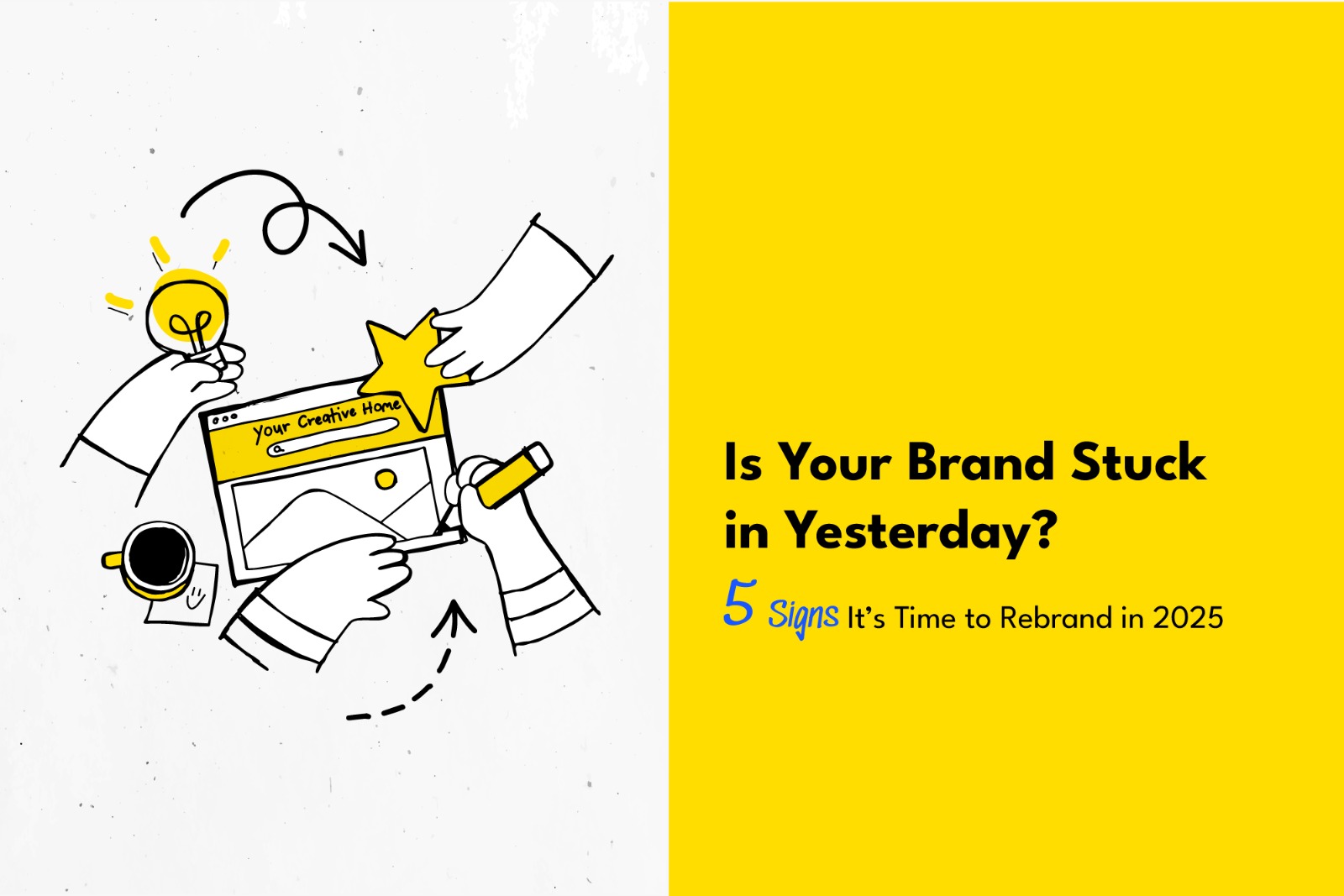The commercial world is changing at an unprecedented pace. The business environment is changing with technology, cultural shifts and customer expectations so that entire sectors of the economy can be disrupted overnight. Something that seemed fresh and cutting-edge five years ago can feel “outdated,” “uninspired,” or “irrelevant.” Failure to adapt as a brand opens the risk of being left behind.
Now is the time to pause and reflect in 2025: Is your brand still stuck in its past? If you’re feeling anything uncomfortably close to the answer “yes,” it is most likely time to refresh your brand. Here are five clear signs your brand either needs to reclaim its own identity, rethink its messaging, or reimagine how it connects with consumers in today’s environment.
1. Your Visual Identity Feels Outdated
First impressions only happen once and it happens quickly. If your logo, website and social media profile feels old, it conveys to the world that your business is out of date with current standards, not at pace with modern competition.
You know it is dated when you see: graphics that are too heavy with text, colors look muddy, the font looks like it should be 2010 rather than 2025, etc.
Why this matters: trends in design are the same as in cultural aesthetics. Today’s branding is influenced by minimalistic ideas, contrasting colors and gradients, letters that respond to their environment, etc.; your identity can even stretch, as opposed to being inflexible across digital design platforms.
Rebranding refers to giving your brand a new appearance while maintaining your history and identity. A rebrand is an update (not a rebuild), just like refreshing your wardrobe the feel of the day while keeping and pairing the same signature pieces.
2. Your Messaging Doesn’t Resonate Anymore
If your brand voice, tagline, or central messaging have not changed for several years, they may no longer resonate with the values of consumers today, and their purchasing decisions.
Clues you are behind: Your messaging focuses only on features and benefits, while not referencing deeper values such as sustainability or personalization.
Why it matters: In 2025, consumers will increasingly find motivation in their alignment with their identity and values. They will want brands to signify something meaningful and be authentic in their communication.
Rebranding gives a chance to hone the voice and messaging, while ensuring that each word aligns with the people you want to pay attention to.
3. You’re Invisible in the Digital Space
Simply having a digital presence is no longer enough; brands should thrive where their customers spend time and flexibility to evolve channels.
How do you know you’re falling behind? Your brand falls flat on social media, or other emerging channels. Your content strategy is limited to static posts, while competitors are playing with video and interactivity, and personalization leveraging AI.
The significance of this is that in a digital-first world, your brand should be native to the channels in which your customers are experiencing your brand. If your visual identity and tone of voice are not communicating across social media, mobile apps, and even immersive experiences like AR or VR, we are missing an opportunity to connect.
A digital-first rebranding allows for adaptability and consistency, and relevance across every channel.
4. Your Audience Has Evolved, But You Haven’t
Your customers in 2025 are not the same as they were five years ago or ten years ago. Millennials are largely mid-career and starting families, while Gen Z is emerging as the largest and most influential consumer group.
Are you behind the times? You may still be using the same marketing-supported buyer personas as the last time your marketing research was conducted, or your marketing tactics seem irrelevant to the new customer segments.
So what? Especially Gen Z, who want transparency and honest, diverse, and ethical business practices. They want personalized and interactive experiences rather than longer advertising messages. If your brand hasn’t shifted up to the same time as your audience, you will be leaving out the people who could take you to the next level of growth.
Rebranding gives you a way to re-engage and get in step with your evolving customer base, and, as The Mosol9 believes, your identity can represent the needs and values of today, not yesterday.
5. Competitors Make You Look Out of Touch
What is the fastest sign that you need to rebrand? If you analyze your competition and they simply look fresher, sharper, current Red flags: You see the newer competition (most often, it is newer) and they are getting attention because of their cool design, interesting copy, and the innovative experience you feel your brand does not have.
Why this matters: Perception is everything. When potential customers look at you and your competition side by side, and they see the competition as cutting-edge and your brand feels outdated (even if you have a great value for the customer), they are going to choose the competition.
A rebrand can help you reposition as a leader not a follower, allowing you to take back market and consumer attention.
Conclusion
Rebranding involves more than just changing the visuals; it involves aligning yourself to the expectations of the moment, and changing relevant trends in your marketplace to remain competitive. Rebranding is about investing in the future of your business.
There are a variety of reasons you might recognize as an occasion to rebrand: your visuals feel out of style, your messaging has pivoted, your online presence is not creating impact, the audience you once spoke to has grown up, or perhaps your competitor has you feeling irrelevant and a little lame.
At The Mosol9, we believe that in 2025, not moving is the same as moving backwards. The companies that change well and prosper are those that grow, change, and develop their offerings to meet their customers where they are today and into the future.




